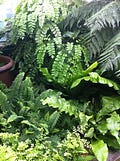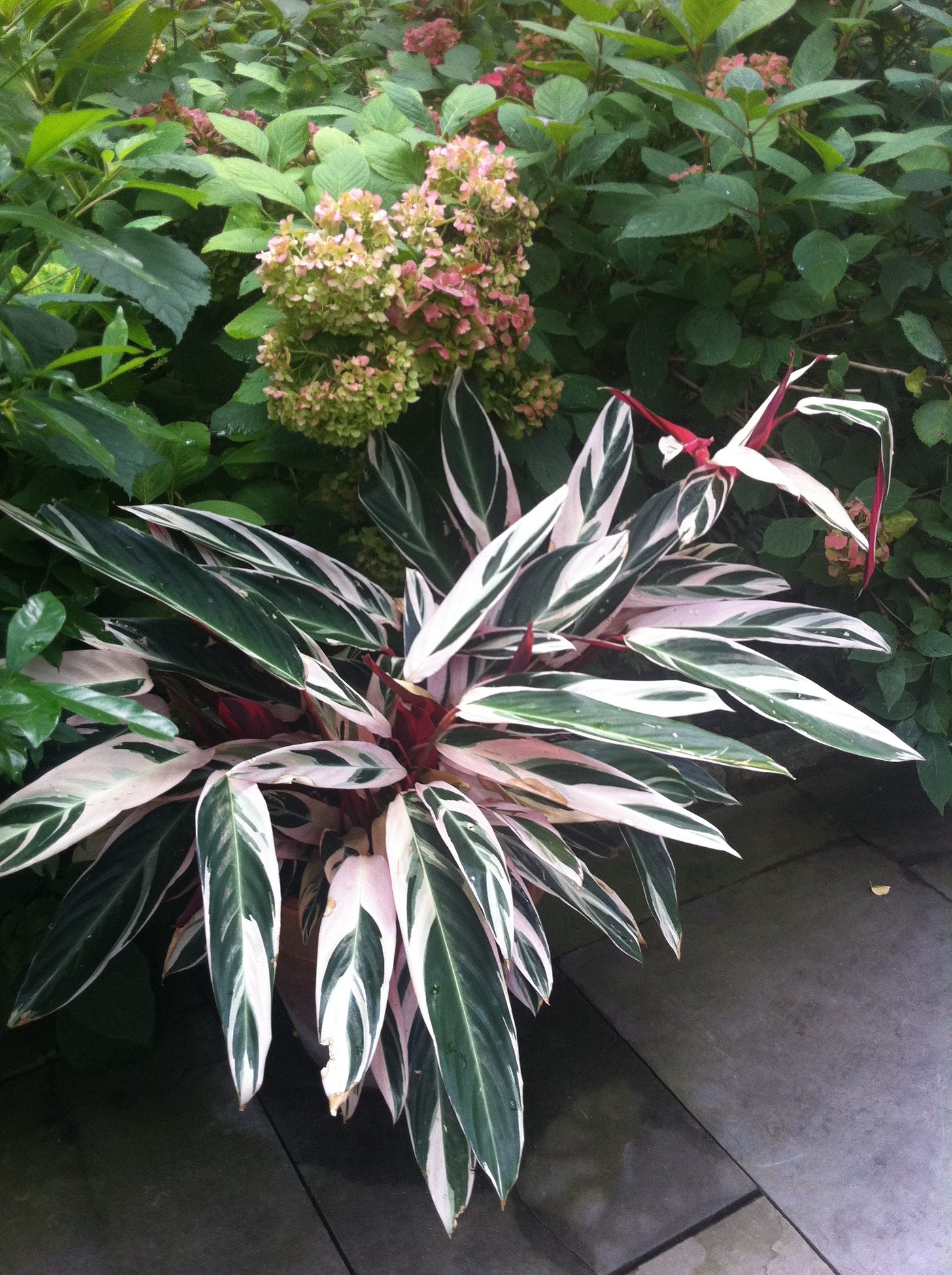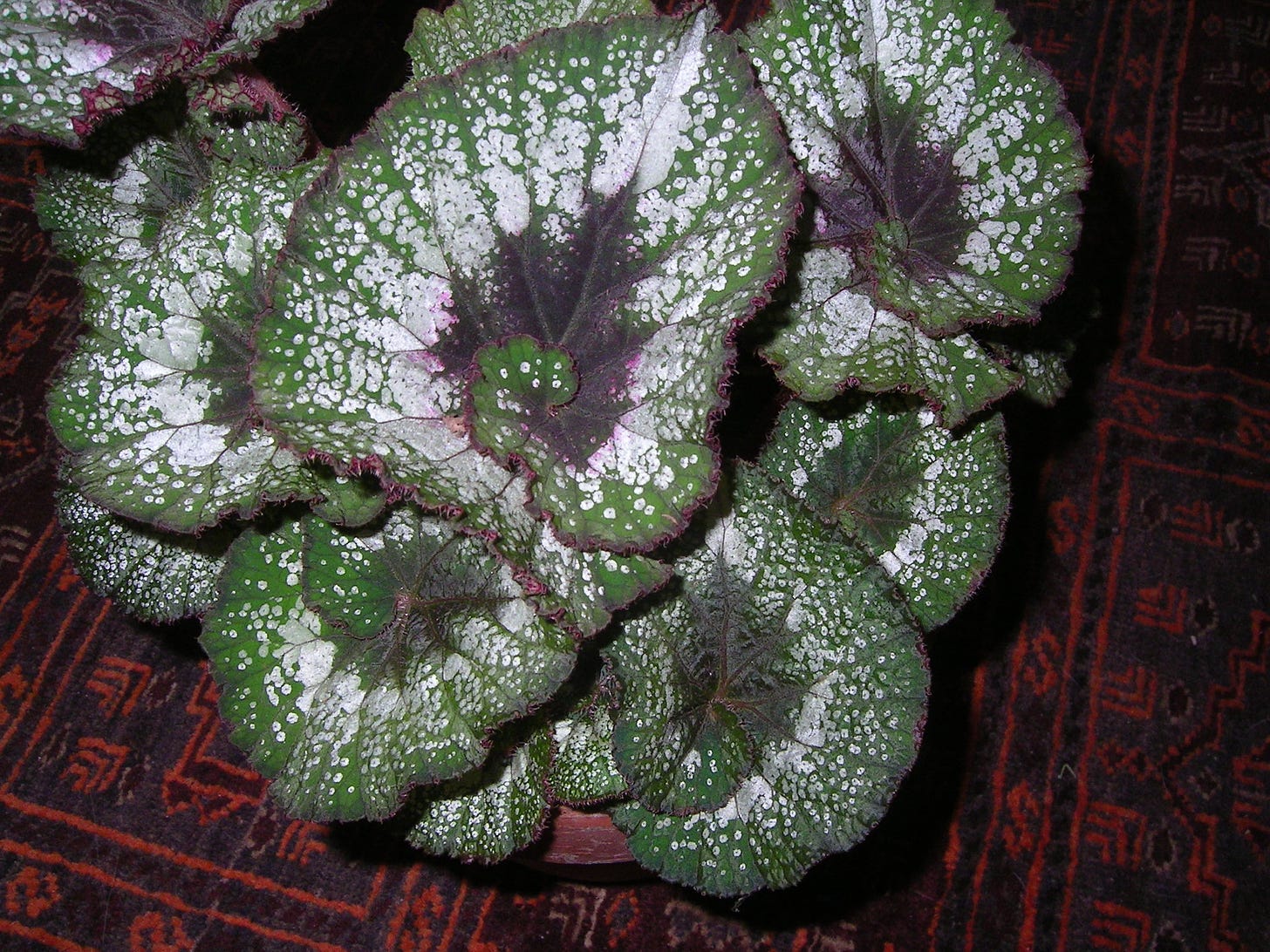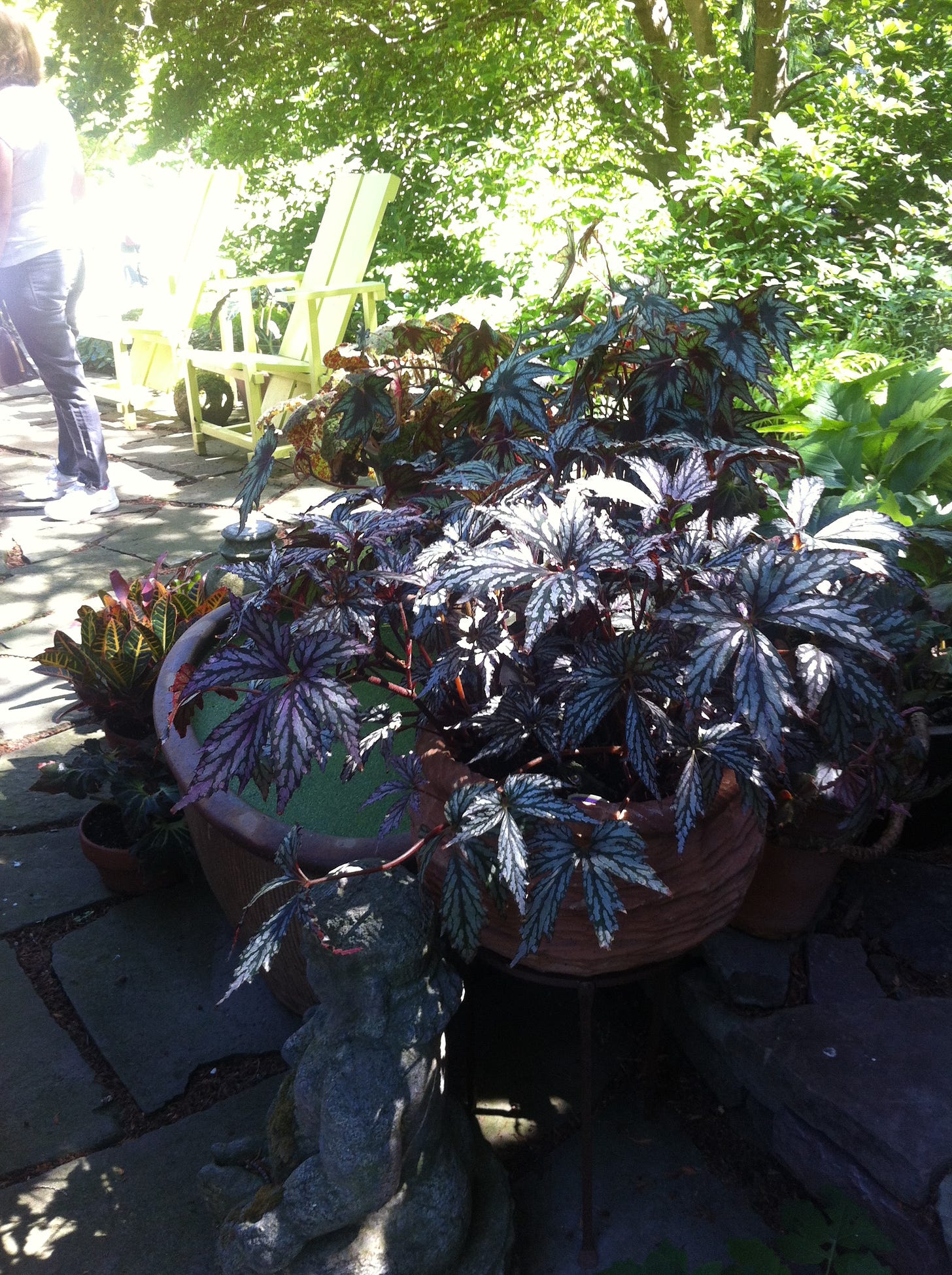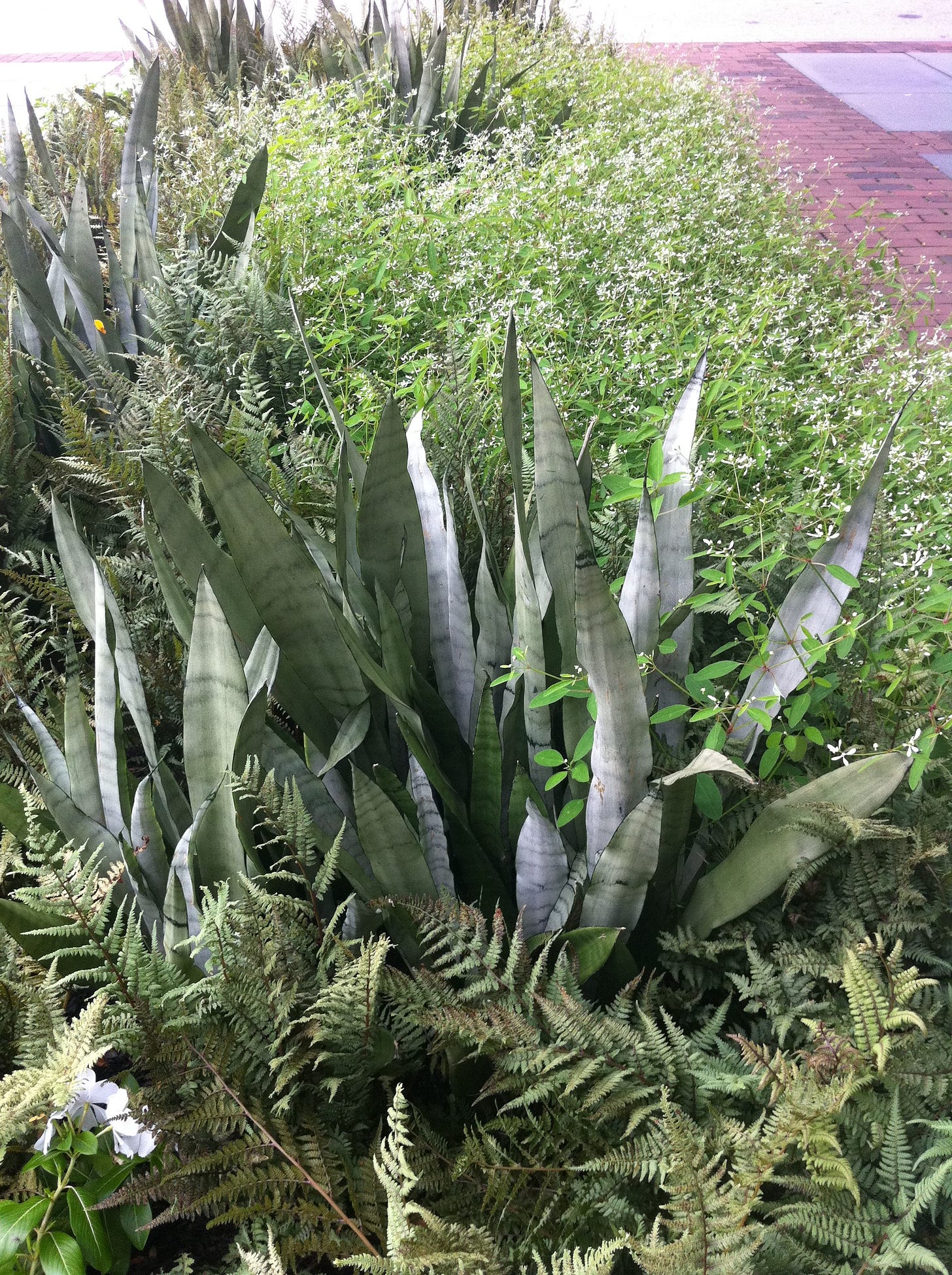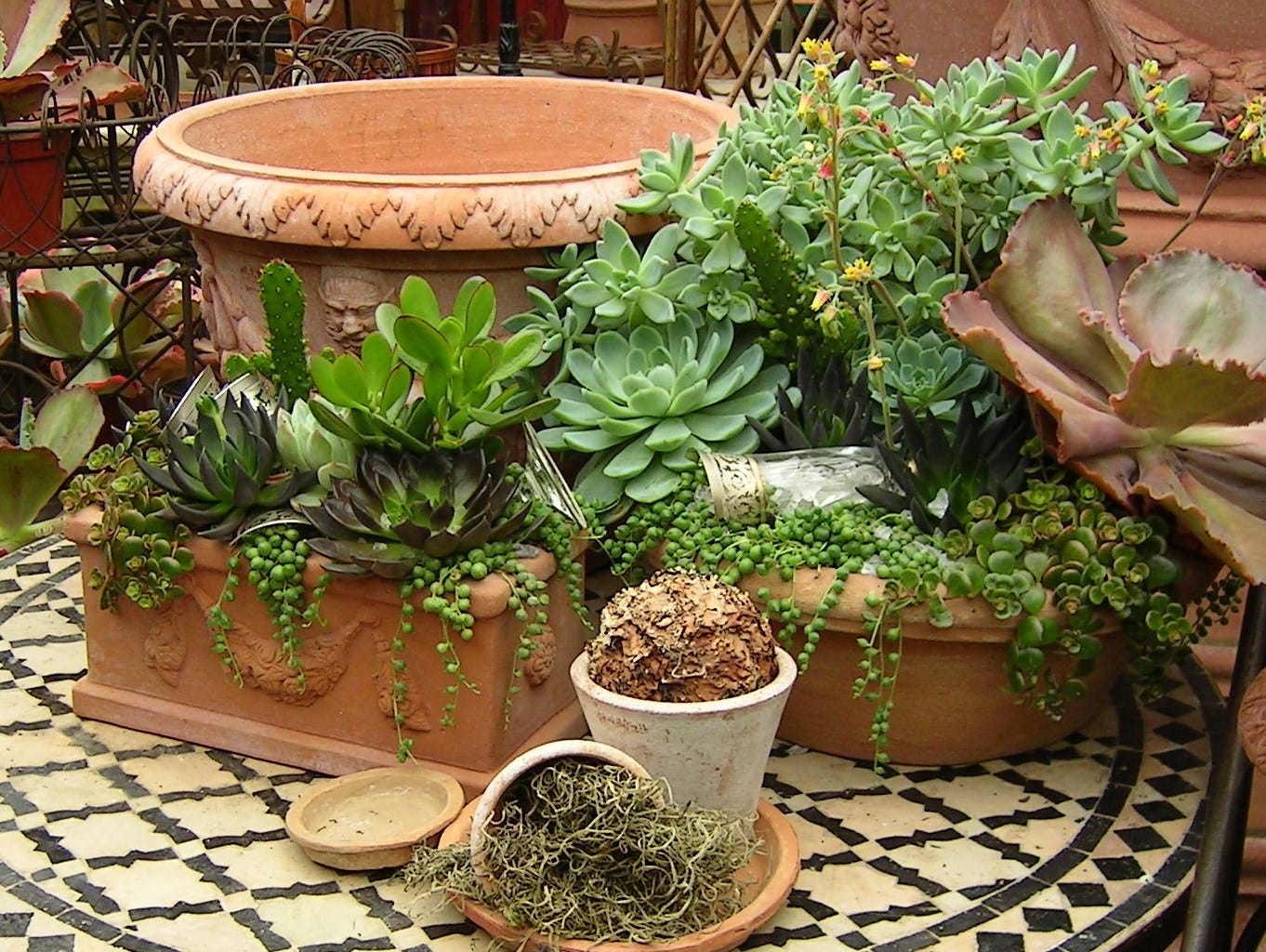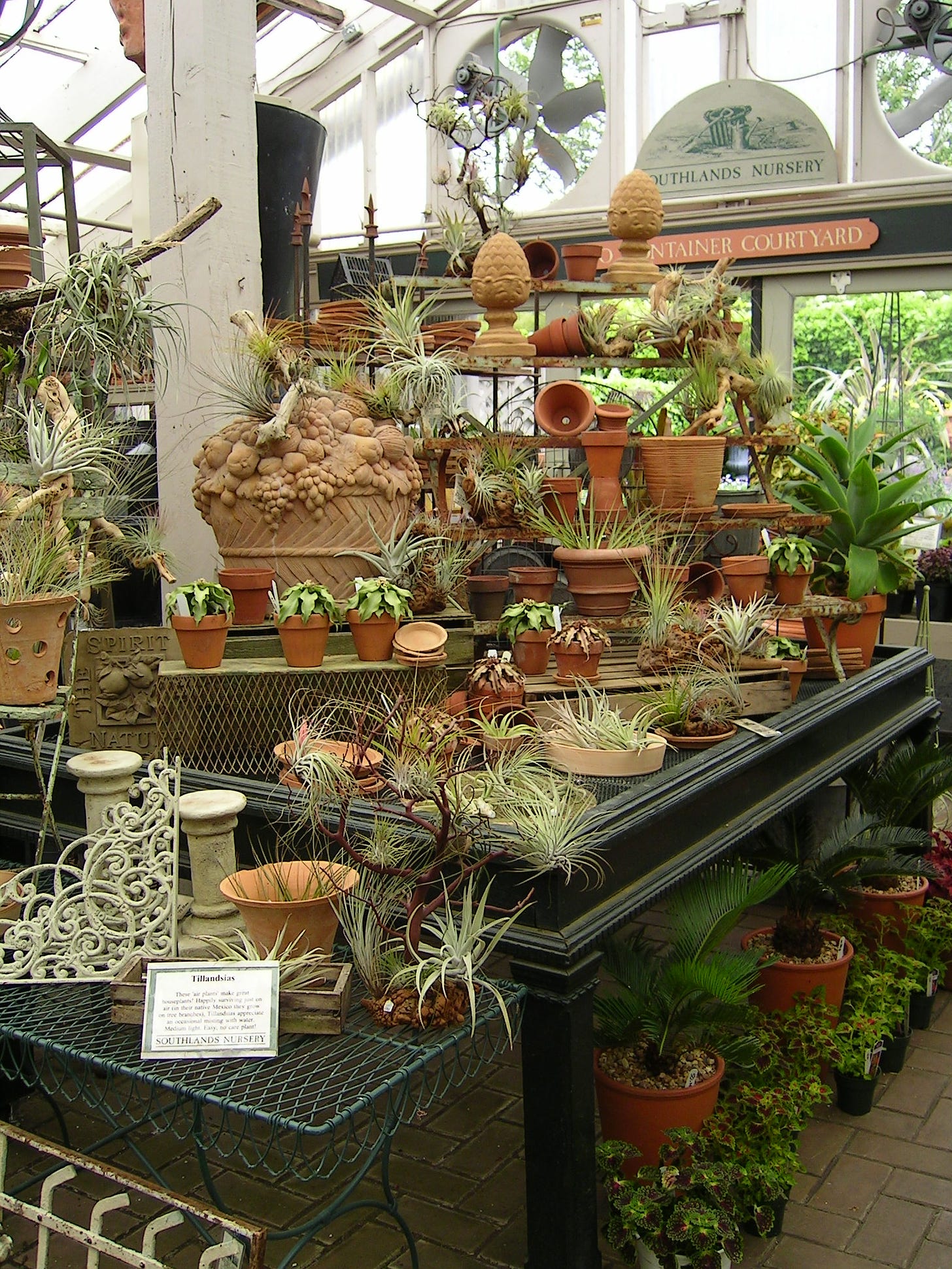Trust me, I get it. I’ve heard others say that it feels like Groundhog Day: waking up, day after day, feeling like everything is in black and white rather than colour. The colour of joy, of extended family, of dining out, of parties, of spontaneous get-togethers and last minute road trips, and holidays in the sun. But this dark time will pass.
In the meantime, we need colour in our days and what better than the different shades of green.
There are some beautiful and worthwhile tropical plants that are well-behaved (and a bit more challenging) houseplants that will give you joy in the depths of winter - especially this Covid winter!
Ferns are the perfect indoor plants for north or east facing windows, or several feet away from brighter sources of light. That being said, I have three small ferns in my west-facing window, but it is partially obstructed by the window frame and a curtain - and they are the sturdy rabbit’s foot fern (Davallia fejeensis) and reliable Blue star fern (Phlebodium aureum). In the photo above, there are four types of fern (plus an Australian tree fern at right — don’t try this in Canada lol!) that can be grown indoors with good success: Maidenhair fern, Bird’s nest fern, Boston fern and Japanese holly fern. I took this picture (above) in one of the greenhouse display gardens at Longwood Gardens so of course the plants there are kept in perfect condition by skilled horticulturists. But you can have ferns that look lush and healthy just like this with a few simple steps. Like in the garden, ferns like to grow as part of an understorey, hence enjoying indirect light, and are kept content with a certain amount of humidity.
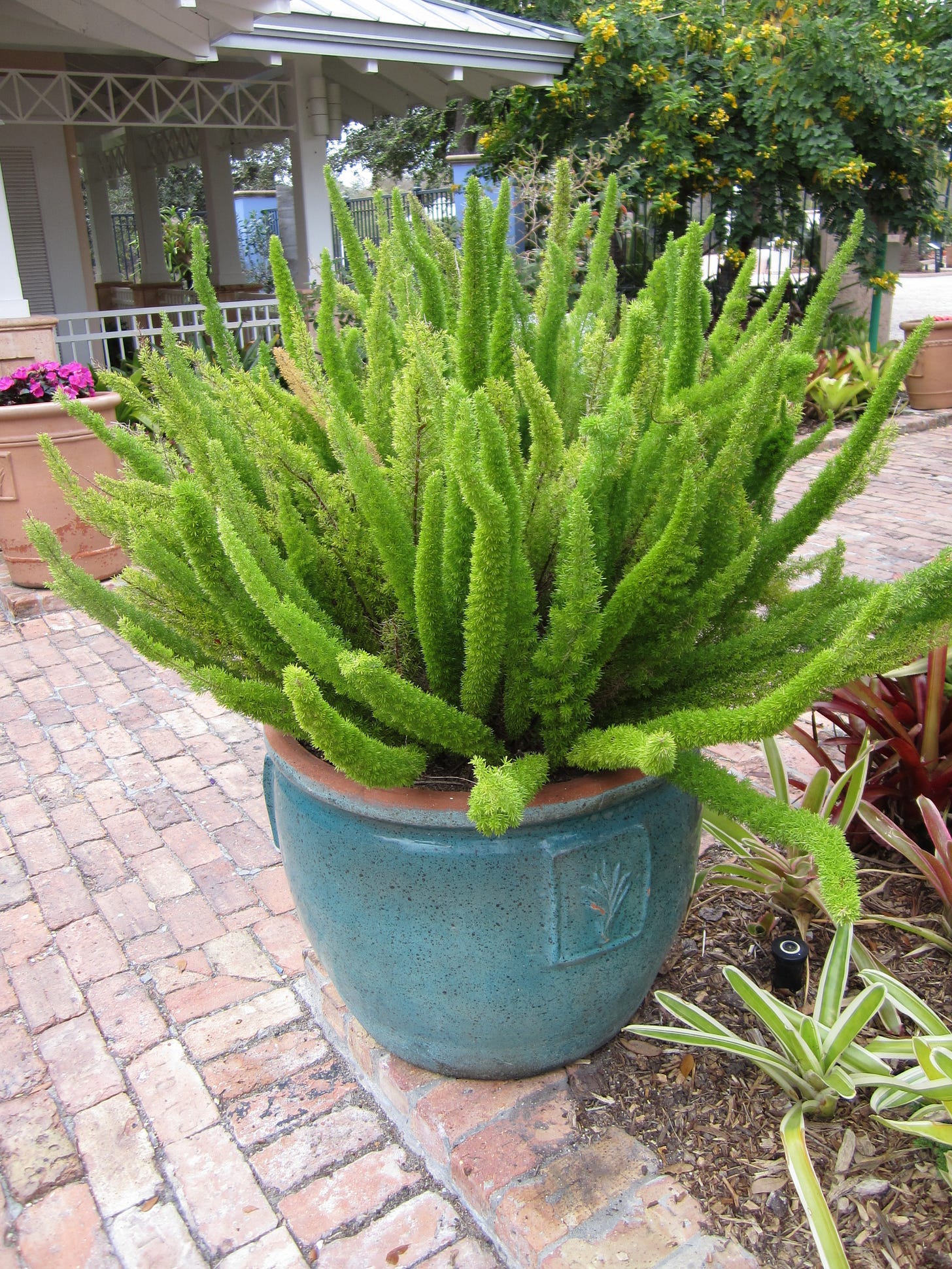
All ferns benefit from being placed on a pebble tray: that is, a water proof tray or large saucer where a layer of pebbles acts as a shelf on which the plant pots sit (with drainage holes, no saucer), filled with a couple of inches of water. As the water evaporates, it creates a humid atmosphere around the foliage and keeps them hydrated. It’s best to clean the trays out regularly, but also to check the water level to make sure it’s always filled just below the pot’s base. You can also spritz your ferns with a spray bottle; using distilled water or at least tap water that is at room temperature is best. When you water, make sure you do so enough that it drains out of the pot’s hole, thoroughly wetting the roots not just the surface.
Ferns don’t like dry heat, so keep them away from hot air vents; I have always had hot water radiator heat, which is much more forgiving.
You can also fertilize your ferns very lightly with a water soluble natural solution; I like to use a seaweed or fish-based fertilizer rather than one of those blue powders. Natural fertilizers have a much lower NPK ratio (that is, nitrogen, phosphorus, potassium) and a low salt content so there is very little risk of inadvertently burning their roots. Do this at half-strength bi-weekly; when the days start to shift in late March, you can begin fertilizing at regular strength bi-weekly at first, and then weekly.
This spectacular plant is known as Calathea or Stromanthe ‘Triostar’ and obviously has striking coloration on its unique leaves. Of course, this plant will only reward you with perfect foliage if you treat it with some very specific care. Like ferns, it benefits from a humid atmosphere and consistent watering. While you can let the soil of ferns go a little on the dry side before repeat watering, if you neglect Stromanthe, its leaf edges will brown and sulk. But don’t use cold tap water; you’ll need to buy distilled water and keep it at room temperature for this plant to respond well. It wants bright indirect light but not direct sun. Whatever you do, don’t let your Stromanthe sit next to a draught; it prefers temperatures between 65 and 80 degrees Fahrenheit.
Staying in the humid atmosphere category of plants, this rex begonia known as ‘Escargot’ is a real showboat! I have been enraptured by these begonias for years because of their striking foliage variations, sort of like the indoor version of the coleus world. This particular one has leaves that have a metallic sheen in their centres and curl inwards like snails. Although the leaves on this type of begonia are hairy, unlike the waxy leaves of other types, don’t let that fool you — they really do respond to a humid atmosphere. But don’t put them in a confined terrarium because their fleshy stems will most certainly rot. If you do mist them, do it gently and only on the leaves. I have been fairly rough with mine, watering them as needed on the soil surface. But if you have a heavy hand and want to be safe, sitting the pot (with drainage hole, of course) in the kitchen sink with a few inches of water will allow you to avoid any chance of overdoing it. Again, tepid water, is best.
These begonia do rely on their foliage for their display so it is important to keep them well fed. Again, if feeding them during the winter months, I’d choose something like this or this, and give it at half strength every week or two.
If you’ve got low light but no interest in raising your humidity, then try this ghostly version of snake plant (Sanseveria trifasciata ‘Moonshine’. With thick, rigid, upright foliage with shadowy markings, this plant will thrive in low light, low humidity and arid soil conditions.
This particular planting was outdoors, again at Longwood Gardens just outside of Philadelphia, and although it is paired with ferns and annual vinca, it is thriving in full sun. Indeed, its silver colour will be amplified in higher light, being greener in the lowest light conditions. By the way, the very delicate plant with small white flowers that creates a foamy effect is Euphorbia ‘Diamond Frost’, a darling in the world of elegant filler annuals.
If you have a big, sunny, south or west facing window, then succulents are your plants of choice! This glorious display is part of the inspired decor at Thomas Hobbs’ Southlands Nursery in Vancouver. Try a planting like one of these, combining different shapes and colour shifts in one pot; jades or cacti to provide height, string of pearls (Senecio rowleyanus) to tumble down the sides, and various echeveria and paddle plant (Kalanchoe thyrsiflora) as statement pieces. Of course, succulents like these store water in their leaves so they can be left alone without watering for extended periods of time and don’t need much coddling. Make sure they can drain freely and when you do water, do it thoroughly so that it drains out the bottom of the planter.
And if you don’t want to commit to watering or feeding, then there is still a plant for you: air plants (Tillandsia) are shockingly simple to keep happy. One, they don’t need soil to survive — they can just sit. Two, they don’t mind a temperature fluctuation between night and day. Three, they only need dunking in water once a week or so to keep their tips from browning; other than that, if you feel you need to do more, give them a spritz on a regular basis. Air plants are truly the plant that you may become addicted to….and end up designing communities that show off their different colouring and shape.
Tips to taking the plunge:
If you buy a tropical plant in winter and take it outside to your car without ensuring that it’s protected from the cold, then you’ll get home to find it looking a little sad. If not right away, then with time. If it is flowering, the blooms will all abort. And worse, its leaves might shrivel up or drop off.
If you buy a plant from a store where there is no knowledgeable staff caring for them (and that includes as simple a task as watering), you’ll likely wind up with a plant that is water-stressed, diseased (fungal diseases like root rot) or with microscopic insect infestations like aphids, thrips, fungus gnats, mealy bugs and scale. No fun. So choose a seller wisely.
If you buy a plant that doesn’t suit your indoor conditions, it will die a slow and judgemental death…and no one wants to be judged by a plant.
